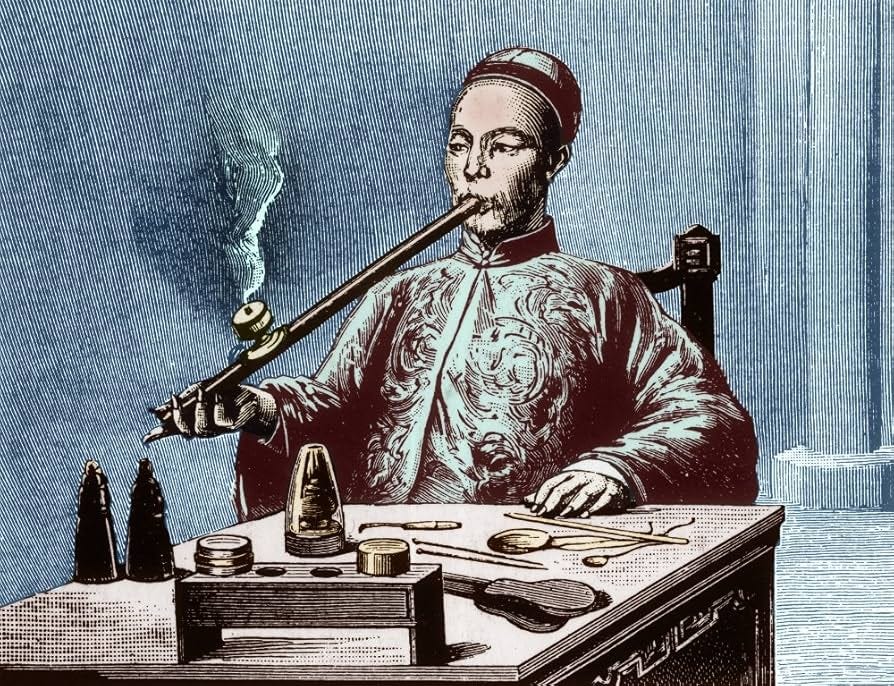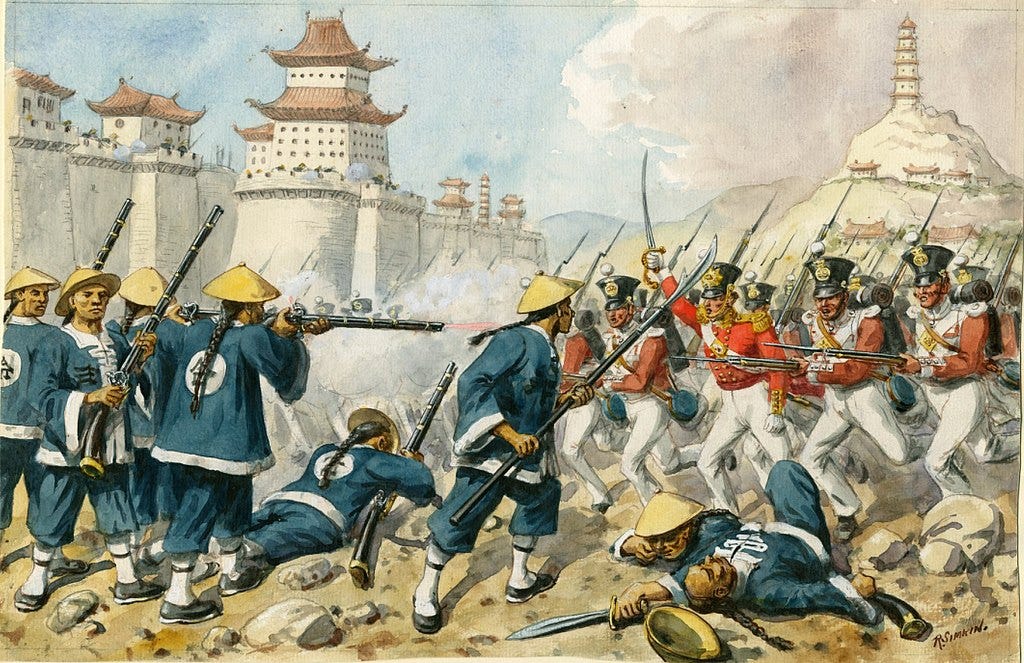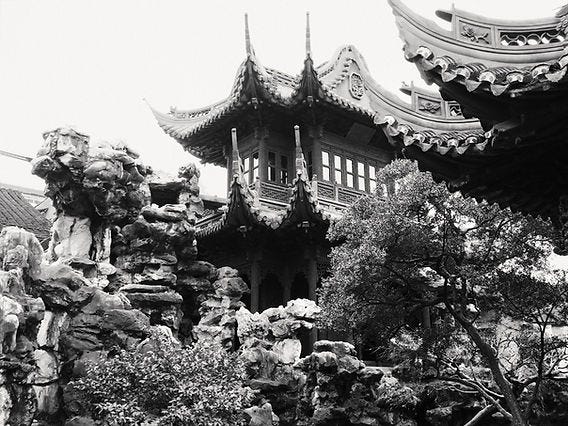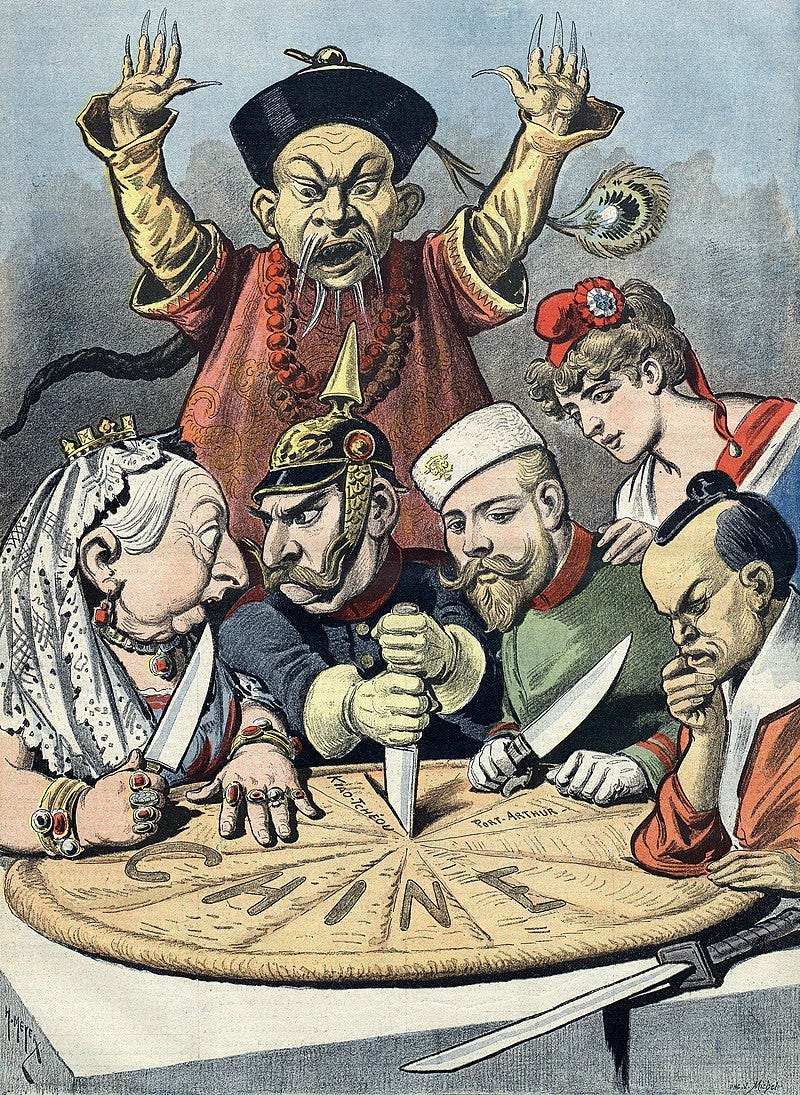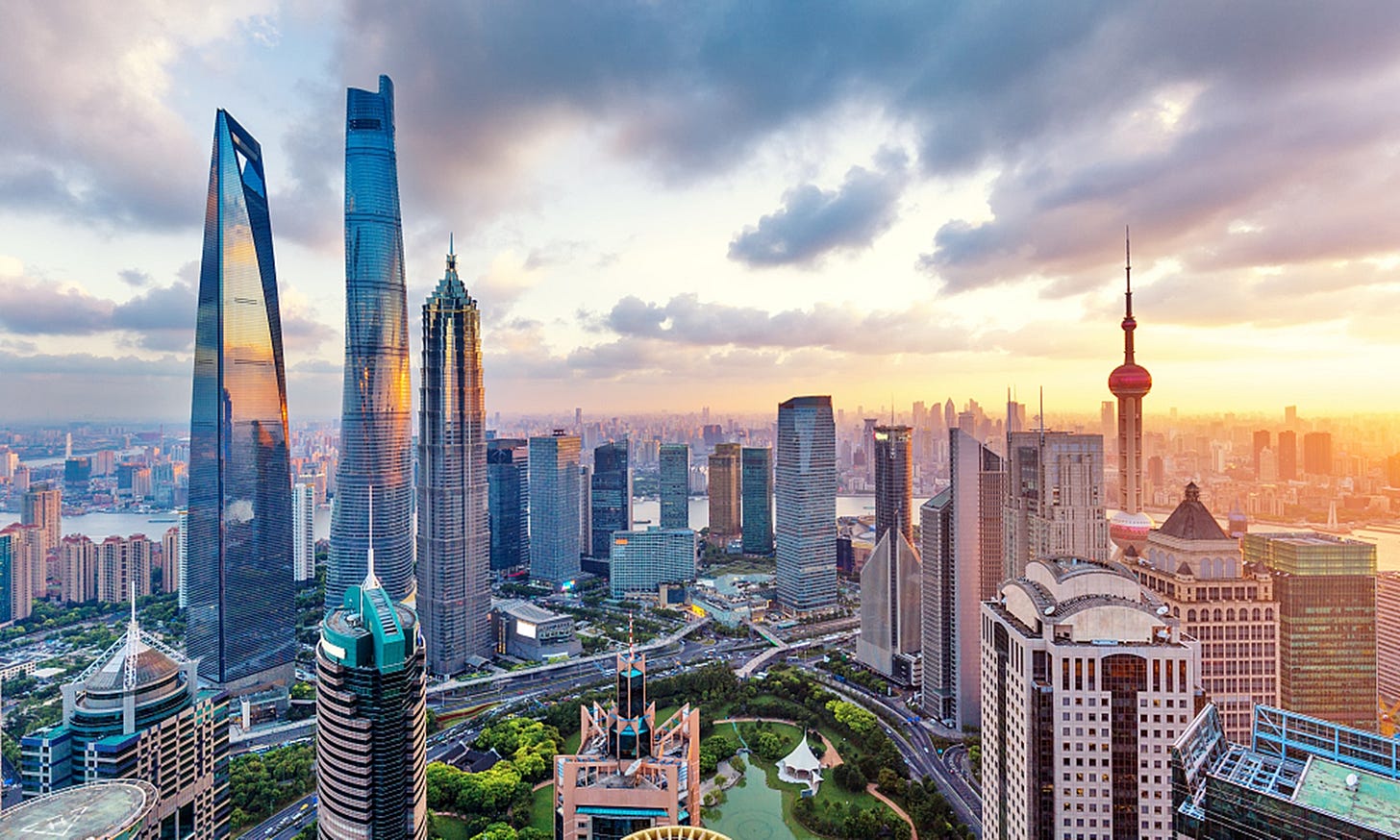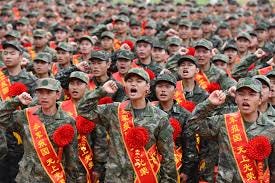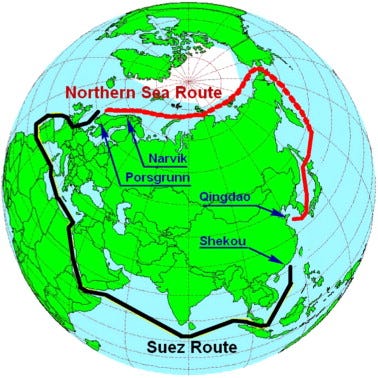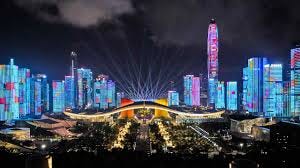Is Fentanyl Fueling a Third Opiate War with China?
Why the fentanyl smuggled into the US is a twisted karma comeback -- and how China's painful opium history is now fueling revitalization

This is Part 2 of a series looking at China and how historic actions of the United States and Britain factor into current tensions. (Here is the link to Part 1, about Taiwan, which China considers a runaway territory).
Fentanyl. That’s theoretically what’s behind the Trump tariffs being slapped on China. The synthetic opiate that’s 50 times stronger than heroin and 100 times more powerful than morphine has been used as an FDA-approved prescription painkiller for 60 years; but it’s the other kind of fentanyl — the black market, illicitly manufactured variety — that’s largely blamed for a million opioid overdose deaths in the US since 2012.
According to KFF Polling, as of July 2023 nearly one in ten adults in the US say that someone in their family had died from a drug overdose.
When illicit fentanyl showed up in the American drug world 12 years ago, almost all of it originated from labs in China, but Beijing outlawed fentanyl in 2019. Since then, Chinese labs are accused of exporting the ingredients for making the low-cost drug that’s often used to cut cocaine and heroin. While some fentanyl and “precursor ingredients” arrive in the US via mail and courier services, most illicit fentanyl is smuggled in from Mexico, where drug cartels manufacture it from the Chinese-made chemicals.
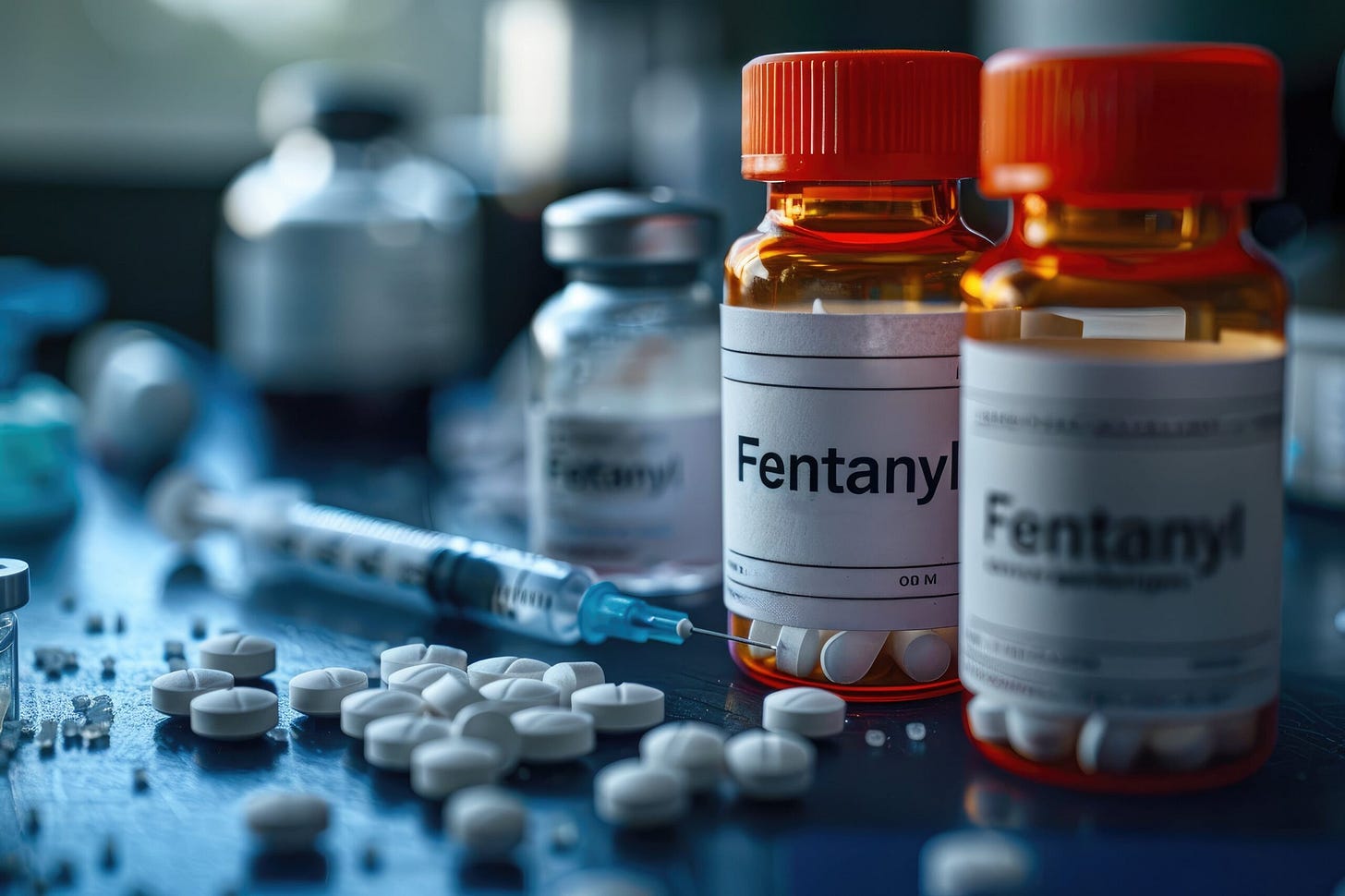
Some politicians, such as US Representative Michael McCaul, who chairs the House Foreign Affairs Committee, say the smuggling into the US of such an addictive, potentially deadly drug — two pounds of which is enough to kill 500,000 people according to the US Drug Enforcement Administration — amounts to chemical warfare. “It’s time to classify illicit fentanyls for what they are — chemical weapons, which Communist China purposefully turns a blind eye to,” he said while sponsoring a 2023 bill to that effect.
Secretary of State Marco Rubio is more ruminative. “You have to wonder,” he said recently on Fox News, “is this a deliberate thing — like are they [the Chinese] flooding us with fentanyl? We can’t prove that they’re doing it on purpose, but boy, it looks like it — it really does.”
What? Flooding a country with a highly addictive, potentially lethal drug on purpose? Beijing certainly knows about that — since it’s exactly what happened to China 200 years ago, as we shall get to below.
A Whole Lot of Poppycock, says China (and Canada)
"Fentanyl is America's problem," was China's foreign ministry response in February when the Trump administration smacked some Chinese imports with 10% tariffs, accusing Beijing of not doing enough to halt the flow of fentanyl. "The Chinese side has carried out extensive anti-narcotics cooperation with the United States and achieved remarkable results."
When Trump doubled down, literally, and smacked 20% duties on Chinese imports this month, China returned the gesture with tariffs on US-made products — and implied that the chemicals coming from the mainland aren’t even the real motivation. “The fentanyl issue is a flimsy excuse to raise U.S. tariffs on Chinese imports,” the Chinese foreign minister Lin Jian said on Tuesday.
Same, same, but different: Canada’s ex-prime minister Justin Trudeau recently said that slapping tariffs on Canadian products supposedly because of fentanyl coming over that border was entirely “bogus” — since, in fact, very little comes to the US from Canada. Trudeau believes the Trump administration is actually using tariffs to weaken the Canadian economy so that the US can more easily annex its neighbor to the north.
China apparently also suspects the true aim of the Trump tariffs isn’t just about controlling fentanyl. Foreign minister Lin on Tuesday added that, whatever the true “agenda” motivating Trump, “If war is what the U.S. wants, be it a tariff war, a trade war or any other type of war, we’re ready to fight till the end.”
And that got me wondering: are we about to enter a third war over opiates?
Karma Comeback?
There’s a deep sense of déjà vu in what’s currently playing out, although the tables have turned. Because 200 years ago, the US — along with major supplier Britain — was flooding the Chinese market with illegal opium, despite the imperial government’s efforts to stop it. So much opium was showing up from British and American traders that at least 40 million Chinese — 10% of the mainland’s population — became addicts.
Even though Brits were hauling in much more of the natural opiate from India than the US — it was a British ploy to balance its trade deficit with China due to tea —Americans were also deeply involved. Opium smuggling created America’s first millionaires, including John Jacob Astor. Among those who delivered elegant wooden chests filled with opium to China was the shipping firm run by the family of Franklin Delano Roosevelt.
The “right” of the West to smuggle profitable but illegal opium into East Asia despite its harmful effects — as well as the right to impose free trade on 19th-century China, which didn’t want to fully open — led to two military showdowns over opiates, aptly called the First (1839-1842) and Second (1856-1860) Opium Wars.
The First Opium War pitted China against Britain, which won; the second saw China fighting Britain and France, with some involvement of the US. China lost the second war as well.
The effects of those wars — and the opiate itself — pried open China to the West, starting with the ceding of Hong Kong to Britain, and the opening of six ports to Western trade. Ultimately, as a result of what China calls “The Unfair Treaties,” Westerners were allowed more access to trade, including in inner China, and could reside in cities such as Shanghai and Peking (Beijing), subject to their own rules.
The Opium Wars ushered in a long period so devastating to the country, ultimately snowballing into societal collapse and government overthrow, that China refers to the period from 1839 to 1949 as “The Century of Humiliation,” although it arguably didn’t end until 1979, when Beijing — not Taiwan — was recognized by the US as representing all China.
We’ll get into the bizarre but fascinating details of that century, including how a Chinese preacher who believed he was the little brother of Jesus launched a 14-year rebellion that killed 20 million people — and how Chiang Kai-shek, then Mao Zedong, came to power — in the next post, since it’s way too long to get into in this one.
The reason I’m bringing it up here is not only to point out the parallel with what happened to China then to what is happening to the US now — although addictive and much more lethal fentanyl is 1000 times stronger than opium — but to point out that the Century of Humiliation was so excruciating for China and a source of such pain and resentment that it is fueling what is happening today.
At least that’s what Chinese President Xi Jinping says is behind his ongoing Rejuvenation Plan — which boils down to “Make China Great Again.”
Humiliation as Fuel: In 2021, Xi explained the motivation for his aspiration to make China the most powerful country on the planet: “With a history of more than 5,000 years, China has made indelible contributions to the progress of human civilization,” Xi noted. “After the Opium War of 1840, however, China was gradually reduced to a semi-colonial, semi-feudal society and suffered greater ravages than ever before. The country endured intense humiliation, the people were subjected to great pain, and the Chinese civilization was plunged into darkness. Since that time, national rejuvenation has been the greatest dream of the Chinese people and the Chinese nation.”
Under Xi, who became president in 2013, China has made remarkable progress modernizing, expanding its influence, and flexing its military muscle.
A Few Achievements and Actions of China’s Ongoing Rejuvenation
Beyond becoming a manufacturing, technological, and economic powerhouse with impressive research and development capabilities resulting in the new AI model “DeepSeek” as well as Huawei’s innovations, modern China, with a population of 1.4 billion, is pushing the envelope worldwide in several key ways. Here are but a few examples:
China’s Belt and Road Initiative (BRI) is financing huge infrastructure projects, including ports, highways, and bridges, in 130 countries mostly in Asia, Africa, and Latin America. One recent example: the $3.5 deep-water Chancay megaport in Peru, a gamechanger for South American-Chinese trade. BRI funding comes with tricky strings — no recognition of Taiwan is one — and China has taken over when countries default, as in Sri Lanka’s Hambantota port.
Military Renovation. China is rapidly modernizing and expanding its armed forces, recently growing it at about 7% a year — and bolstering cyber, missile, and space capabilities. With 2 million active military personnel, it now has the largest number of fighters on the planet as well as the world’s biggest navy. China is also expanding its nuclear arsenal.
Conquering Space: China’s impressive space advances include temporary space research stations and the construction of the modular Tiangong Space Station that began in 2021. It became the first country to explore the dark side of the moon in 2019 and it’s sent a rover to Mars. China plans to build a humongous, half-mile-long solar array in outer space by 2030 to beam energy back to Earth — providing more power, it says, than all the oil on the planet.
Expanding Territories. China is getting very aggressive in the South China Sea, where it claims sole ownership of the Spratly Islands, rich in gas, oil and fish, and where the Philippines, Vietnam, Malaysia, Taiwan, and Brunei own islands. China also claims all the Paracel Islands, as do Vietnam and Taiwan. Beyond building military bases and outposts — sometimes on coral reefs — China’s military keeps ramming other countries’ vessels, prompting the Philippines, for one, to boost US presence at nearby bases.
Deepwater Research: China is also building the world’s first underwater station planned to operate 1.2 miles beneath the surface in the South China Sea. Supposedly purely a scientific center, it’s hard to imagine it won’t have some military uses as well when it opens in 2030.
Fishing Further: China's fishing fleet has expanded dramatically, leading to numerous international disputes from the South China Sea to Peru. With shark fins considered an aphrodisiac, Chinese fishing vessels often catch sharks — some 70,000 a year — slice off their fins and throw them back, triggering international outrage.
Expanding Trade Routes: China has been collaborating with Russia to develop the Northern Sea Route through the Arctic as part of its ambitious "Polar Silk Road" initiative, which could slash 50% off of transit times from Asia to Europe. This partnership involves investing in infrastructure and icebreakers to facilitate year-round navigation in the sea route made possible by melting Arctic glaciers and climate change.
Testing international waters. Launching live fire drills in the Tasman Sea 300 miles off Australia — without warning to Australia and causing nearly 50 commercial flights to make emergency diversions last month — wasn’t technically illegal, but it was rude and reckless and has analysts reading it as Chinese muscle-flexing down under.
Taiwan Tensions: Over the past few years China has been majorly ramping up military actions around Taiwan — surrounding the island with warships in naval drills every few is becoming routine, while flying unidentified into its airspace is a near-daily occurrence.
Poverty Alleviation: Xi claims to have lifted 100 million out of extreme poverty — electrifying rural areas, building roads, improving transportation, and boosting local economies — a milestone often cited as one of the major achievements of his administration.
Creation of new ultramodern tech cities. Numerous dazzling cities are springing up. Though development began prior to Xi, the fishing village of Shenzhen for one underwent rapid urbanization and modernization, turning it into a global manufacturing and technology powerhouse — and home to companies such as Huawei. Driven by the establishment of Alibaba Group in 1999, Hangzhou, for another, has transformed into a center for digital technologies, e-commerce, fintech, and cloud computing.
Big Brother is watching. China's extensive digital surveillance system of its citizens blends artificial intelligence, facial recognition, and data analytics to monitor daily activities via a vast network of over 540 million surveillance cameras that enable real-time tracking across cities and rural areas.
China Rising
Clearly China is digging out of that societal black hole that resulted from “The Century of Humiliation” as well as Mao Zedong’s many misguided efforts during the mid-20th century, including the Great Leap Forward that alone killed 50 million.
In October 2020 President Xi noted that “The East is rising and the West is declining” — pointing at the United States as “the biggest source of chaos in the present-day world.”
Whether China is actively trying to speed up that chaos and avenge itself for the Opium Wars by making fentanyl widely available in the US isn’t clear, but China’s foreign minister Lin Jian has loudly suggested that it would behoove the US to treat China with respect to deal with the fentanyl issue rather than using tariffs and bullying tactics. His recommendation has thus far been ignored.



